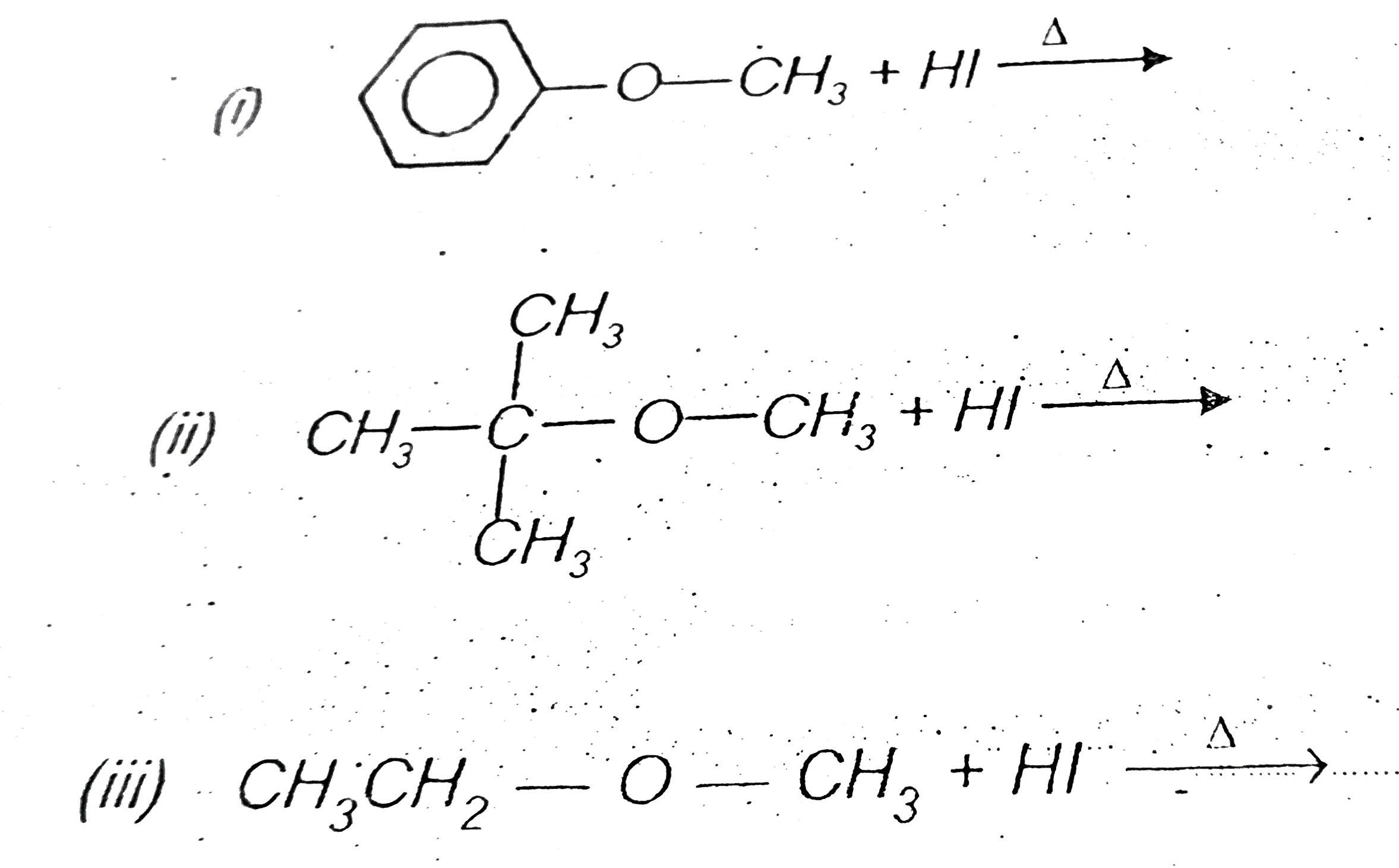The EA order for halogen is
F>Cl>Br>I
F<Cl<Br<I
F<Cl>Br>I
F>Cl<Br>I
The correct Answer is:C
To determine the order of electron affinity (EA) for halogens (fluorine, chlorine, bromine, and iodine), we need to consider the concept of electron gain enthalpy. Here's a step-by-step solution:
Step 1: Understand Electron Affinity
Electron affinity is defined as the energy released when one mole of electrons is added to one mole of gaseous atoms of an element. A more negative value indicates a greater tendency to gain an electron.
Step 2: Identify the Halogens
The halogens we are considering are:
- Fluorine (F)
- Chlorine (Cl)
- Bromine (Br)
- Iodine (I)
Step 3: Analyze the Size of Atoms
As we move down the group from fluorine to iodine, the size of the atoms increases:
- Fluorine is the smallest.
- Chlorine is larger than fluorine.
- Bromine is larger than chlorine.
- Iodine is the largest.
Step 4: Consider Electron-Electron Repulsion
In smaller atoms like fluorine, when an electron is added, the added electron experiences significant electron-electron repulsion due to being close to the nucleus and other electrons. This repulsion reduces the stability of the added electron.
Step 5: Compare Electron Affinities
- Chlorine (Cl): Despite being larger than fluorine, chlorine has a more favorable electron affinity because the added electron experiences less repulsion compared to fluorine.
- Fluorine (F): Although it has a high electron affinity, the repulsion in its small size makes its electron affinity less negative than that of chlorine.
- Bromine (Br): As we move to bromine, the electron affinity is less negative than chlorine and fluorine due to increased atomic size and reduced effective nuclear charge felt by the added electron.
- Iodine (I): Iodine has the least negative electron affinity due to its larger size and the corresponding decrease in effective nuclear charge.
Step 6: Establish the Order
Based on the analysis:
- Chlorine (Cl) has the highest electron affinity.
- Fluorine (F) is next.
- Bromine (Br) follows.
- Iodine (I) has the least negative electron affinity.
Final Order of Electron Affinity
The order of electron affinity for halogens is:
Cl > F > Br > I
Electron affinity is defined as the energy released when one mole of electrons is added to one mole of gaseous atoms of an element. A more negative value indicates a greater tendency to gain an electron.
The halogens we are considering are:
- Fluorine (F)
- Chlorine (Cl)
- Bromine (Br)
- Iodine (I)
As we move down the group from fluorine to iodine, the size of the atoms increases:
- Fluorine is the smallest.
- Chlorine is larger than fluorine.
- Bromine is larger than chlorine.
- Iodine is the largest.
In smaller atoms like fluorine, when an electron is added, the added electron experiences significant electron-electron repulsion due to being close to the nucleus and other electrons. This repulsion reduces the stability of the added electron.
- Chlorine (Cl): Despite being larger than fluorine, chlorine has a more favorable electron affinity because the added electron experiences less repulsion compared to fluorine.
- Fluorine (F): Although it has a high electron affinity, the repulsion in its small size makes its electron affinity less negative than that of chlorine.
- Bromine (Br): As we move to bromine, the electron affinity is less negative than chlorine and fluorine due to increased atomic size and reduced effective nuclear charge felt by the added electron.
- Iodine (I): Iodine has the least negative electron affinity due to its larger size and the corresponding decrease in effective nuclear charge.
Based on the analysis:
- Chlorine (Cl) has the highest electron affinity.
- Fluorine (F) is next.
- Bromine (Br) follows.
- Iodine (I) has the least negative electron affinity.
The order of electron affinity for halogens is:
Cl > F > Br > I
Similar Questions
Knowledge Check
- Question 1 - Select One
The correct order of acidity of oxoacids of halogens is
AHCIO<HCIO2<HClO3<HClO4BHClO4<HCIO3<HClO2<HCIOCHCIO<HCIO4<HClO3<HCIO2DHClO4<HClO2<HClO3<HCIO
Assertion: Second E.A. for halogens is almost zero.
Reason: Fluorine has maximum value of electron affinity.View SolutionAmong the halogens, fluorine differs considerably form the other members. The hydrides of halogens also differ in their properties.
Florine differs form the order halogens due to:View SolutionAmong the halogens, fluorine differs considerably form the other members. The hydrides of halogens also differ in their properties.
Which of the following halogens do not form polyhalide ?View SolutionWhich of the following is not true for halogens ?
View SolutionThe Ea for forward reaction is 50 kcal. The Ea for its backward reaction is:
View SolutionThe EA for inert gases is likely to be
View SolutionWhich of the following arrangements shows the correct order of electron affinity of the four halogen atoms I,Cl,Br,F?
View Solution


